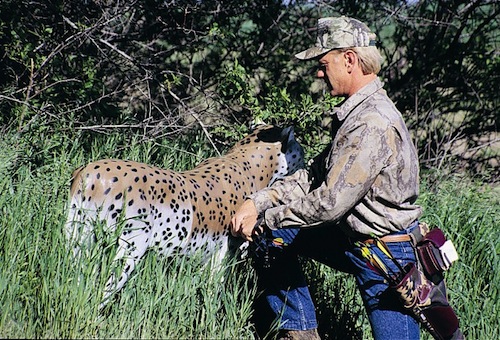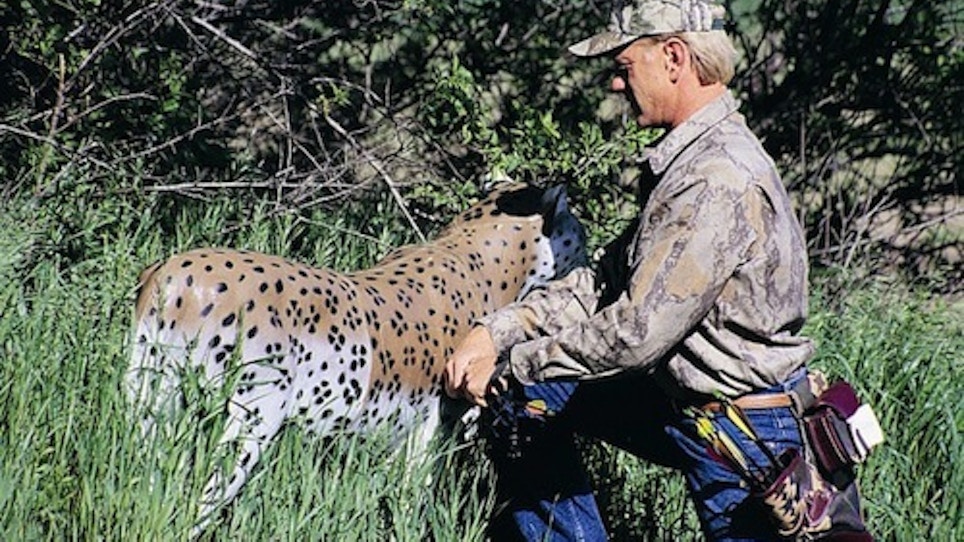Previously: Practice For The Moment Of Truth
Make A Shooting Routine
Before taking each practice shot, I literally run through a mental checklist to be sure I perform every shot in exactly the same manner. If you practice using this technique, your checklist will be burned into your subconscious, and you will find yourself going over the list without even thinking about it when shooting at animals. Reviewing this checklist is also a good way for beginning archers to develop their shooting form along with their proficiency.
My shooting routine consists of seven simple steps, reminders about the key elements of proper shooting form.
1) Take a deep breath to relax and steady yourself for the shot—just like when you are about to take a long shot with a scoped rifle.
2) Pick a spot you want the arrow to hit, and don’t take your eyes off of it until the arrow goes through it—the smaller the spot you are shooting at, the closer you will hit to it. Shooting 3-D targets is great practice and it also helps bowhunters better visualize how the vitals are situated on game animals. However, in my experience, I have found that I benefit more from shooting at small target spots on a regular basis. Stick-on target spots force me to aim at—and concentrate on—a single small spot. When it comes time to shoot at a game animal, I am used to picking out a small spot. I’ll find a crease between two muscles and settle my pin over that spot.
3) Draw the bow and firmly find the anchor point. Be sure your head stays up straight and the bowstring touches the tip of your nose.
4) Relax your bow hand grip. Even slight tension in the palm of the bow hand may push or pull the shot off-target.
5) Cover the spot you want to hit with your sight pin. Many shooting coaches tell you to bring your pin from above, downward to the desired point of impact. Most bowhunters naturally shoot in this manner. However, if you ever find yourself experiencing “target panic,” try coming from below, upward to the desired point of impact. Shooters in target panic tend to release early before the pin has fully settled over the point of impact. Moving the pin upward from below is more desirable on all game animals if you are releasing early.
6) Once your pin is settled over the spot, gently squeeze the trigger of your release. Touching off the trigger must be a slow, smooth, and deliberate motion to avoid torquing the release, especially if the trigger has a lot of travel. I adjust my releases so the slightest touch sets them off.
7) Follow-through. The mistake many bowhunters make is trying to see where their arrow hits the target. Inevitably, when this happens the archer will drop his bow hand as the arrow is released which causes the arrow to hit low and left for right-handed shooters and low and right for left-handed shooters. The next time your arrows aren’t hitting the mark, try concentrating on not moving a muscle until you hear the arrow strike the target.
Practice At Long Range
I have also found practicing at longer shooting distances to be a tremendous confidence-builder. It will not only increase your effective hunting range, but it will also make your normal 20- to 25-yard shots seem easy.
Think back to when you were a beginning archer. Remember at first, how tough it seemed to group all your arrows in a two-inch bull’s-eye at 10 yards? Then as you backed up and shot 20 yards, all of a sudden, the 10-yard shot became easier and easier? Believe it or not, that same trend holds true, no matter how far you back up.
Don’t misunderstand me—I am not condoning extra-long shots at animals. When it comes to hunting shots, there are just too many variables to risk taking terribly long shots. However, if you back up in increments to 50, 60, or more yards in practice and see groups tightening up at those ranges, you will be absolutely astonished how 30- and 35-yard shots can become routine.
Be Confident In Your Shots
As a bowhunter, the only sensation that is more desirable than the adrenaline rush upon spotting a trophy animal is the secondary rush you get immediately after a perfect shot. The worst sensation? When reality sinks in after you miss the shot or made a poor hit on a trophy animal.
Simply, if you are not absolutely sure you can make a perfect shot on an animal, don’t take the shot. But, if you practice as much as possible using the shooting routine outlined here, you should very rarely, if ever, find yourself in that situation. Going to the woods with that type of self-confidence will rein in the worst case of buck fever so you’ll be ready when your moment of truth arrives.
Next: Tune Bow Before Practice, Practice In Hunting Clothes






